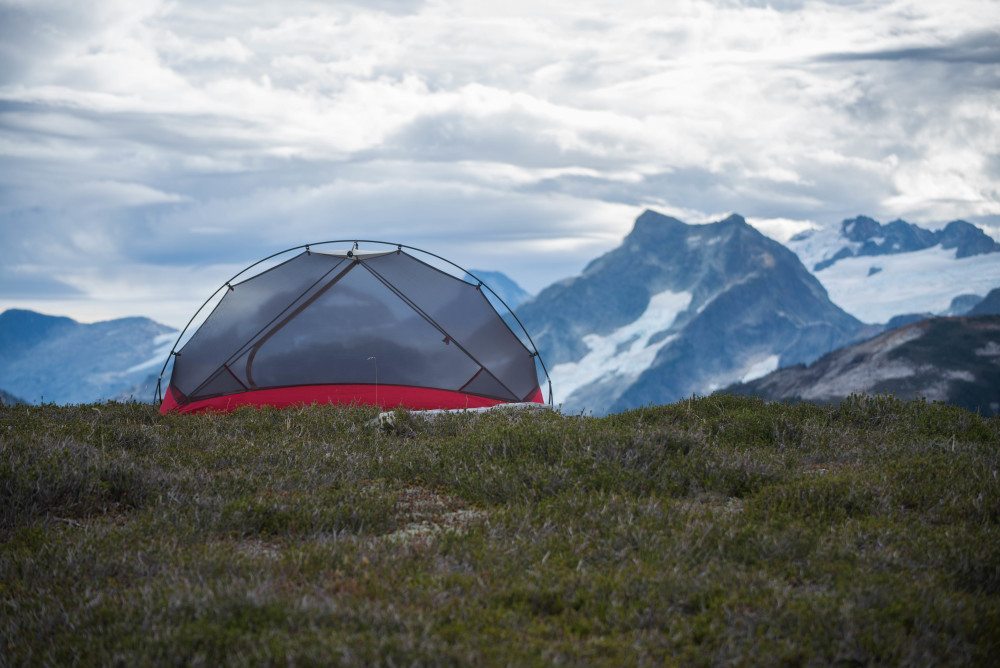
A Guide on How to Choose a Tent
Anytime you walk into a backpacking store, the amount of gear in one section can be rather overwhelming. This especially goes for tents. As several tents are out on display, you can get lost once you have to choose a tent that’s right for you. Similar to choosing a backpack, a cooking stove, or a sleeping bag, the tent you choose could really make a difference on the quality of your trip. It will be your shelter and protection from many aspects of Mother Nature. Before you commit to a tent, follow this guide to help you be more confident about your decision.

Are You Backpacking or Camping?
The type of tent you choose depends on whether or not you’re backpacking or camping. If you’re backpacking, you will need a lightweight tent that’s under 5 lbs. You can get a tent for just yourself, and if you’re sharing, you can get a larger tent and divide up the pieces you and your hiking buddy will each carry.
If you are car camping, you have the freedom to bring as big of a tent as you’d like. You can choose to get one big tent for the whole family, or choose one for the kids and one for the adults. There’s a lot more flexibility since you don’t have to carry the tent on your back, and people who camp usually like to take advantage of this fact.
If you like to do both car camping and backpacking, consider purchasing two kinds of tents.
Learn Basic Tent Terminology
Footprints/Ground Cloths: Footprints or ground cloths are like shoes for your tent. They help prevent wear and tear that could happen if your tent were to sit directly on the ground.
Fly: Refers to any outer layer of a tent.
Rainfly: A rainfly is the outer layer of the tent which is floorless and waterproof, which is of course used to help keep the rain out.
Double-Walled: A tent consisting of two walls: the rainfly and the tent body. It’s more versatile than a single-walled tent.
Single-Walled: A tent consisting of one layer of water-resistant or wind-resistant fabric, supported by poles. Best for lightweight backpacking.
Tarp Tent: An open, single-walled shelter. Some have a bathtub floor, others do not. They allow for more airflow.
Ultra-light Tent: Consists of any tent that is considered to be lightweight.

Consider All Weather Possibilities
As an outdoorsy person, you’re probably more tolerant of certain weather conditions than most people. However, there’s a difference between hiking in a little bit of rain, and sleeping outdoors during a thunderstorm. When you choose a tent, whether it be for camping or backpacking, make sure to consider all weather possibilities. These are known as 3 or 4 season tents. A 3 season tent should cover you, but if you plan on doing some hardcore winter hiking, then go for the 4 season (or get two separate ones).
Be Able to Put It Together
Learning how to pitch a tent is no doubt a very important part of being in the outdoors. That being said, if you’re going to have to spend an hour at the end of a long day hiking to pitch your tent just so you can sleep, you might not be a “happy camper”. Knowing about the different kind of tent setups there are is crucial when you choose a tent.
First off, there are free-standing tents, which means that the tent can stand up on its own without the use of stakes or poles. These are great in areas with limited space or harsher weather conditions. Next are pole hubs, which connect a series of poles together easily, while making the foundation of the tent stronger. Then, there are pole clips which connect poles to a canopy or sleeves using clips. However, this means you’ll have to thread poles through the fabric, which can be bothersome. Last, are color-coded tents, which makes the pitching part a little less confusing than the other types.

Size Matters
Sometimes, tent size can be deceiving if you’re looking just at the outside. Before you buy any tent, make sure you get inside and see it for yourself. Of course, you can check if the measurements of the tent are even appropriate beforehand. Things to consider are the floor dimensions, the height of the tent, and the shape of the walls. Even if the box says one thing, you’re going to want to go inside and test it out. After all, you will be living inside of it.
What Makes the Tent Unique?
Not all tents are the same, and in fact, many tents have unique features which may make the difference between the tent you buy and the one you walk by. Features to look for when buying a tent are the amount of space to either hang clothes off of vestibules, or to lay them out on the floor. You should also check for how much ventilation is available in the tent, either from zip or mesh panels.
Additionally, some tents have features that you really can’t find anywhere else. If you’re interested in having the coolest tent on the campground, than take a look at the unique designs and colors at Fieldcandy.
Use this guide to help choose a tent that’s best for you.













